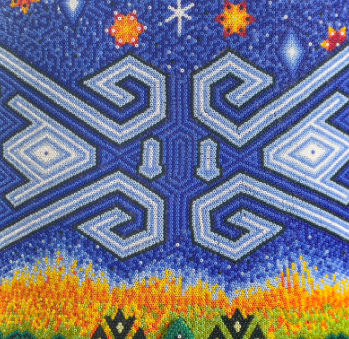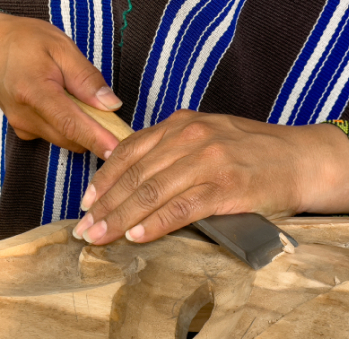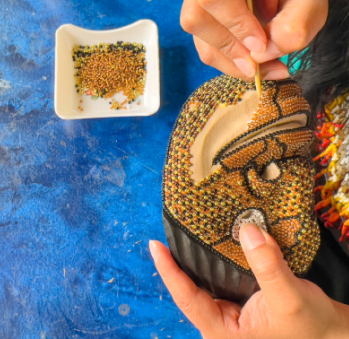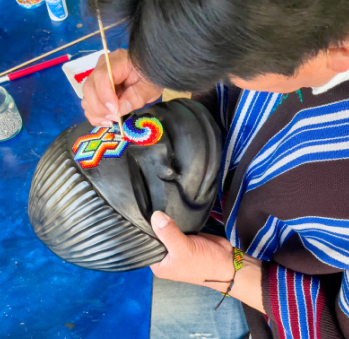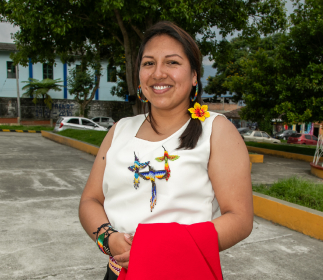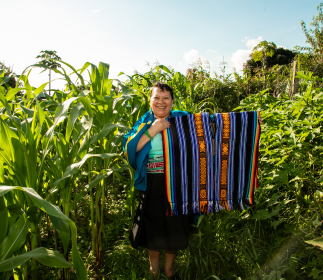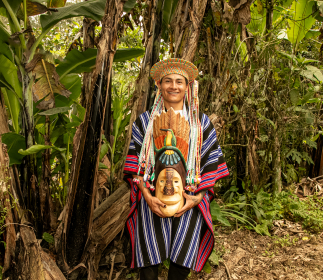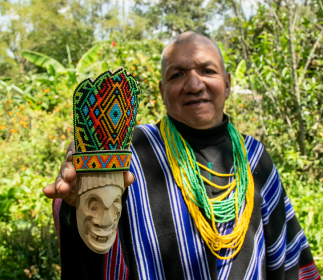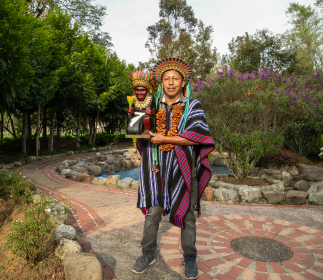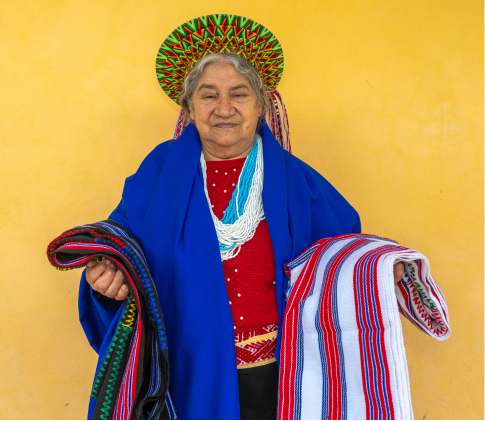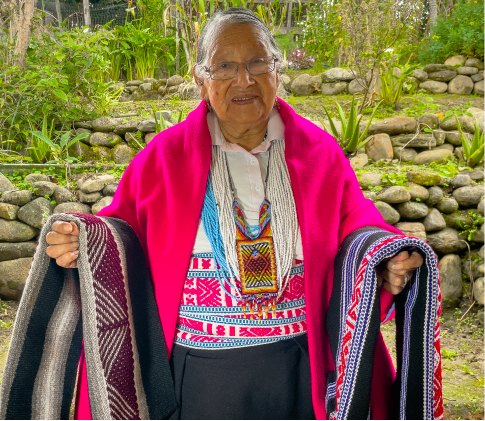Gerardo Chasoy
Workshop: Putumayo Arte y Diseño
Craft: Enchapados y recubrimientos
Trail: Putumayo Route
Location: Sibundoy, Putumayo
Gerardo discovered who he was when he was in Bogotá. He had grown up lulled by the love from his grandparents and parents. His father is Inga and his mother, Kamentsá: a unique privilege that he never really valued before arriving in Bogotá and realizing that he knew very little about his own culture. Everyone asked him about his heritage, but he did not have much to say. He went to a crafts fair and saw how the world of Putumayo —where he was from— captivated so many other people. He felt ashamed because he had never felt that same fascination others had with his roots.
Something in him changed, however. Upon returning to his community to see the taitas and finally connect with said roots, he decided to abandon his studies. He was already a third-year student at university and was getting his degree in civil engineering. After this enormous decision, he tried everything, from basketmaking to weaving and mask-making. It was as if he was trying to make up for lost time. He was barely in his twenties when he picked up wood for the first time. Although he had a natural talent for drawing, he was not aware of his ability with crafts. He had fully developed his skill at woodworking within a year of having started. He achieved this through hard work: he shaped chunks of wood for hours until it was dark outside.
Thanks to both trial and error and his insatiable curiosity, he learned what he knows today. He found a guide in the bata Clementina Jujaibioy, a master woodcarver. She had learned the art in secret because it was not seen as appropriate for a woman to work with wood. She taught him to make the famous Matachín mask, invented by Basilio Juajiboiy, her father. She taught him the Sanjuanes mask as well. Both of them are worn proudly during the inauguration of the Carnaval del Perdón (Carnival of Forgiveness). Today, every time he fashions the mask of an old and wise bata —woman—, he remembers and commemorates his teacher, celebrating her long life.
Many of these masks have a chaquira-bead veneer, which makes their colorful designs shine even brighter. His work also encompasses sculptures that can be larger than two meters and airbrush drawings. Nothing is too much for him: every new endeavor excites him. This is how he absorbed the wonders of his environment. During this process, he started to remember what it was like to sit around the tulpa and listen to the elders tell stories that he thought he did not know. He was able to recall them talking about the meaning behind the masks’ powerful gestures of mockery of the foreigner, joy, and sadness. He has also remembered the drawings of Sinye —the sun—, which depict the sun rising at dawn, at dusk, or even overcast with rain or surrounded by rainbows depending on how they are made. Likewise, he has been reborn. Today, he is fiercely devoted to the spread of his community’s knowledge.
Craft

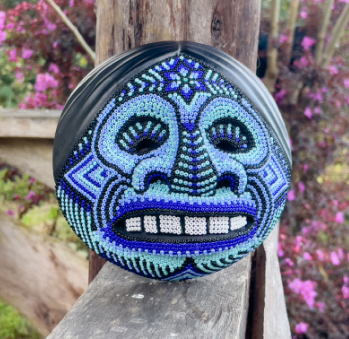




Artisans along the way
Artisans along the way
No puede copiar contenido de esta página









































